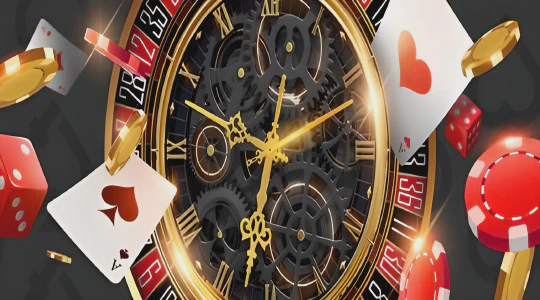How to Play Indian Poker
Introduction
Indian Poker, also known as Blind Man's Bluff, is a card game that has gained immense popularity in many parts of the world. The game is simple to learn and requires players to use their memory and bluffing skills to win. It is a fantastic game that can be played with friends and family at any gathering or party. Regardless of age, Indian Poker is a great way to spend time with your loved ones.
The Rules of Indian Poker
The game is played with a standard deck of 52 cards. At the beginning of the game, each player is dealt one card face down, which they should not look at. Players can only see their opponents' cards. The objective of the game is to have the highest-ranking card at the end of the game.
Steps:
- All players are dealt one card face-down.
- Players can only see their opponent's cards.
- The first round of betting begins.
- Players can choose to swap their cards with their opponent.
- The second and final round of betting begins.
- The player with the highest-ranking card at the end of the game wins the pot.
Here's a table of card rankings in Indian Poker:
| Card | Ranking |
| Ace | Highest |
| King | |
| Queen | |
| Jack | |
| 10 | |
| 9 | |
| 8 | |
| 7 | |
| 6 | |
| 5 | |
| 4 | |
| 3 | |
| 2 | Lowest |
Strategies for Winning at Indian Poker
Indian Poker requires a combination of luck and skill. Here are some strategies that can help you win the game:
- Pay attention to your opponent's behavior. Watch for any clues that might indicate the strength of their hand. For example, if they seem nervous, they might have a weaker hand.
- Bluffing is an important part of Indian Poker. You can try to convince your opponents that you have a stronger hand than you actually do. However, be careful not to overdo it, as your opponents might catch on to your bluff.
- Choose your opponents wisely. If you are playing with experienced players, it might be harder to win. On the other hand, if you are playing with novice players, you might have a better chance of winning.
- Be patient. Sometimes, the best strategy is to wait and see what happens. Don't rush into betting or swapping your card too quickly. Take your time, and make your decisions carefully.
- Practice your poker face. Your facial expressions can give away a lot about the strength of your hand. Try to keep a neutral expression, and don't give anything away.
- Keep track of the cards that have been played. This can help you make more informed decisions during the game.
Frequently Asked Questions about Indian Poker
Q: How many cards are dealt in Indian Poker?
A: Each player is dealt one card face down at the beginning of the game.
Q: Can players look at their own cards in Indian Poker?
A: No, players can only see their opponents' cards.
Q: How many rounds of betting are there in Indian Poker?
A: There are two rounds of betting in Indian Poker.
Q: Can players swap their cards with their opponents in Indian Poker?
A: Yes, players can choose to swap their cards with their opponent after the first round of betting.
Q: How is the winner determined in Indian Poker?
A: The player with the highest-ranking card at the end of the game wins the pot.
Q: What is the ranking of cards in Indian Poker?
A: The ranking of cards in Indian Poker, from highest to lowest, is Ace, King, Queen, Jack, 10, 9, 8, 7, 6, 5, 4, 3, and 2.
Q: What strategies can I use to win at Indian Poker?
A: Some strategies that can help you win at Indian Poker include paying attention to your opponent's behavior, bluffing, choosing your opponents wisely, being patient, practicing your poker face, and keeping track of the cards that have been played.
Q: Is Indian Poker a game of luck or skill?
A: Indian Poker is a game that requires a combination of luck and skill.



